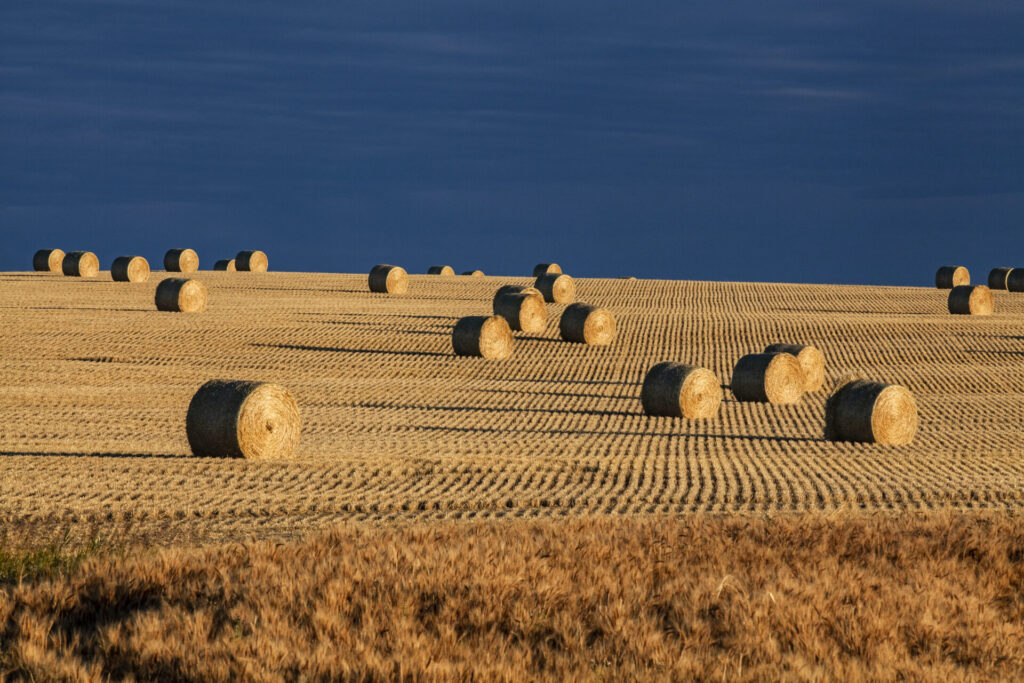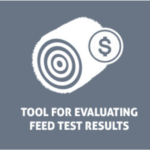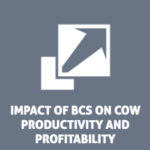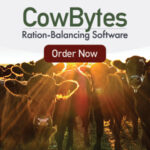Taking Some of the Guesswork Out of Winter Feed Challenges 🎙️
This article written by Dr. Reynold Bergen, BCRC Science Director, originally appeared in a September 2023 issue of Canadian Cattlemen magazine and is reprinted on BeefResearch.ca with permission of the publisher.
Remarque : cette page web n’est actuellement disponible qu’en anglais.
CLICK THE PLAY BUTTON TO LISTEN TO THIS ARTICLE:

This column usually focuses on research projects funded by the Beef Cattle Research Council (BCRC) through the Canadian Beef Cattle Checkoff that producers pay when they market cattle. But most individual research projects are like pieces of a jigsaw puzzle. Some of them may look interesting on their own, but they’re almost always a lot more informative when they’re put together with the other pieces of the puzzle to show the bigger picture.
That’s what extension (or “knowledge and technology transfer”) is about – turning science into cost-effective, useful solutions for producers. Historically, provincial agriculture departments were major players in extension, but many have pulled back from extension and redirected their staff towards government program delivery instead.
Private industry has partly filled this gap, but many producers remain skeptical about whether a sales rep’s advice is unbiased. As well, some production practices like grazing management and low-cost winter-feeding strategies aren’t “for sale.” There’s no profit motive for anyone but the adoptee, so there’s no clear driver for private industry to encourage their adoption.
That’s where the BCRC’s technology transfer team puts their focus – they work with researchers and extension experts from across Canada to combine new research results and existing knowledge together into information and tools that help producers make economically sound production decisions.
For example, recent years have seen widespread interest in the use of polycrops. The BCRC (and others) have funded independent research trials comparing how blends containing different combinations of plant species affect forage yields, quality and soil health under different soil and growing conditions. A recent post on BeefResearch.ca combined producer experience and researcher expertise to give interested producers some factors to think about when considering polycrops. Other posts are designed for producers who remain in drought’s grim grip, focusing on developing grazing plans, feed testing, alternative feeds, water testing, culling and early weaning.
To encourage regular monitoring of body condition score (BCS), the BCRC developed a BCS tool to demonstrate how small declines in herd average BCS can have profound impacts on the value of next year’s calf crop.
That BCS tool is accompanied by a calculator where you can enter the actual costs of various common feeds (e.g., alfalfa/grass hay, barley, cereal silage) to determine whether it’s worth feeding more to improve the herd’s average BCS. Another calculator helps to determine whether a poor crop is worth harvesting or salvaging for feed. Harvested feed is costly and their nutrients are valuable – changing how bales are stacked or covered can help prevent sun, rain, snow, weathering and mold from stealing those nutrients you paid so much for.

Of course, not all alfalfa / grass hay or cereal swath is nutritionally identical, so producers are always advised to get their feed tested. But feed test printouts are a combination of chemical symbols, acronyms and numbers. These results aren’t very helpful if you don’t know what they mean or how to interpret them. Another tool on the BCRC site lets you enter a few key results from a feed test sheet and determine whether that feed will provide adequate levels of energy, protein, and certain important minerals for different classes of cattle (e.g., mature cows vs. replacement heifers in early, mid- or late gestation). This tool will not balance a ration. But, it will give you a sense of whether an individual feed is potentially adequate or not, all on its own.
CowBytes is the most recent addition to the BCRC roster of producer tools. CowBytes is an easy-to-use ration-balancing software program to help cattle producers improve their herd nutrition. It allows producers to select the type of cattle that they intend to feed, target body weights, daily gains, body condition scores, and/or stage of gestation or milk production. Climatic conditions such as wind or temperature can also be adjusted. CowBytes was originally developed in the early 1990s by provincial agriculture departments in Alberta, Saskatchewan and Manitoba, Agriculture Canada and the University of Saskatchewan. It was distributed by Alberta Agriculture until 2020. The BCRC recently assumed the CowBytes trademark and responsibility for the software. The Saskatchewan Ministry of Agriculture will continue to provide technical support for users and the beef nutrition expertise to lead future upgrades. Unlike the BCRC’s other tools, CowBytes is not free – it is for sale to Canadian customers for $60 to help offset the costs of maintaining and updating the software. Over the years, it has been a popular tool for producers and nutritionists across North America. We are pleased to be able to make it available once again – 40 copies were sold the first day it was available.
So, What Does This Mean… to You?
If you’ve paid the Canadian Beef Cattle Check-Off, you’ve helped develop these tools. Why not use the search bar above to find what you’re after, give it a try and let us know what you think?
Bottom line: Feed costs are the largest ongoing variable cost facing cattle producers. These tools can help you identify opportunities to save money, get the most value out of your feed, and the best performance out of your herd. They are especially important when feed is expensive.
The Beef Cattle Research Council is funded by the Canadian Beef Cattle Check-Off. The BCRC partners with Agriculture and Agri-Food Canada, provincial beef industry groups and governments to advance research and technology transfer supporting the Canadian beef industry’s vision to be recognized as a preferred supplier of healthy, high-quality beef, cattle, and genetics.
Click here to subscribe to the BCRC Blog and receive email notifications when new content is posted.
The sharing or reprinting of BCRC Blog articles is typically welcome and encouraged, however this article requires permission of the original publisher.
We welcome your questions, comments and suggestions. Contact us directly or generate public discussion by posting your thoughts below.


